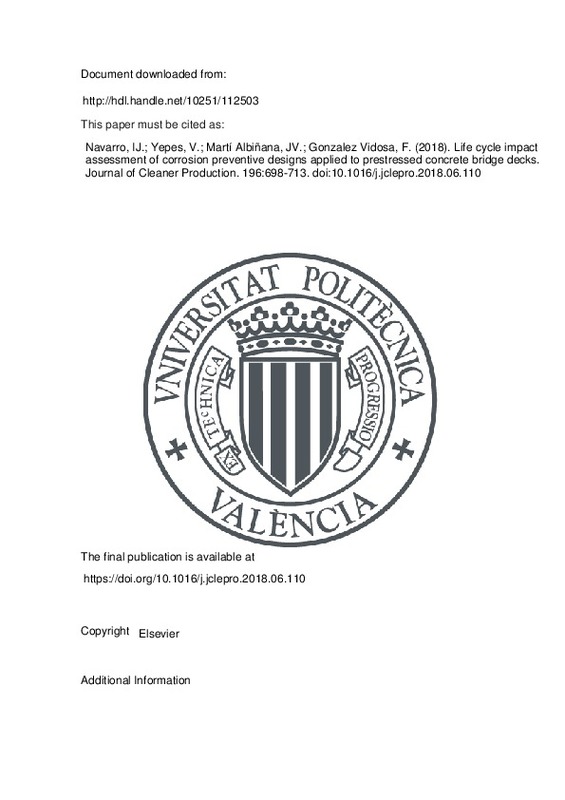JavaScript is disabled for your browser. Some features of this site may not work without it.
Buscar en RiuNet
Listar
Mi cuenta
Estadísticas
Ayuda RiuNet
Admin. UPV
Life cycle impact assessment of corrosion preventive designs applied to prestressed concrete bridge decks
Mostrar el registro completo del ítem
Navarro, IJ.; Yepes, V.; Martí Albiñana, JV.; Gonzalez Vidosa, F. (2018). Life cycle impact assessment of corrosion preventive designs applied to prestressed concrete bridge decks. Journal of Cleaner Production. 196:698-713. doi:10.1016/j.jclepro.2018.06.110
Por favor, use este identificador para citar o enlazar este ítem: http://hdl.handle.net/10251/112503
Ficheros en el ítem
Metadatos del ítem
| Título: | Life cycle impact assessment of corrosion preventive designs applied to prestressed concrete bridge decks | |
| Autor: | ||
| Entidad UPV: |
|
|
| Fecha difusión: |
|
|
| Resumen: |
[EN] Chloride corrosion of reinforcing steel in concrete structures is a major issue in the construction sector due to economic and environmental reasons. Assuming different prevention strategies in aggressive marine ...[+]
|
|
| Palabras clave: |
|
|
| Derechos de uso: | Reconocimiento - No comercial - Sin obra derivada (by-nc-nd) | |
| Fuente: |
|
|
| DOI: |
|
|
| Editorial: |
|
|
| Versión del editor: | https://doi.org/10.1016/j.jclepro.2018.06.110 | |
| Código del Proyecto: |
|
|
| Agradecimientos: |
|
|
| Tipo: |
|







![[Cerrado]](/themes/UPV/images/candado.png)


